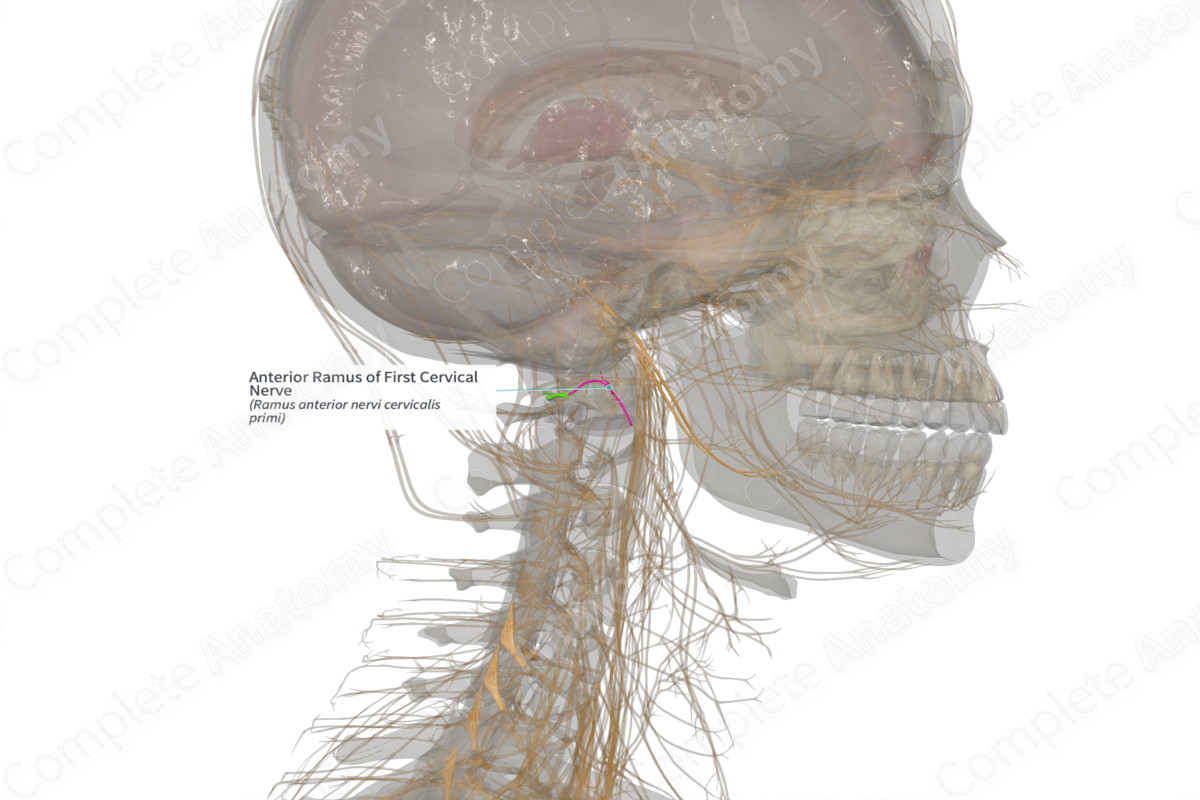
Anterior Ramus of First Cervical Nerve (Left)
Ramus anterior nervi cervicalis primi
Read moreQuick Facts
Origin: First cervical nerve.
Course: Run laterally in the neck from the foramen between occipital bone and atlas vertebra and contributes to the cervical plexus.
Branches: Communicating branch to hypoglossal nerve.
Supply: Somatic motor innervation to the geniohyoid, infrahyoid, and prevertebral muscles. Visceral autonomic efferents to blood vessels and glands.
Related parts of the anatomy
Origin
The anterior ramus of the first cervical nerve originates from the first cervical nerve.
Course
The anterior ramus of the first cervical nerve originates in the neck, lateral to the foramen between the occipital bone (of the skull) above and the atlas (first cervical vertebra) below.
Branches
The anterior ramus of the first cervical nerve sends a communicating branch to the hypoglossal nerve and contributes to the cervical plexus along with anterior rami of the second to fourth cervical nerves.
Supplied Structures
The anterior ramus of the first cervical nerve innervates the infrahyoid muscles (sternohyoid, sternothyroid, and superior belly of omohyoid) via the cervical plexus. The thyrohyoid and geniohyoid muscles are also innervated by the anterior ramus of the first cervical nerve via a communicating branch to the hypoglossal nerve.
The sympathetic innervation to blood vessels and glands in the head and neck region originates in the lateral horn of the first thoracic spinal segment and ascends in the sympathetic chain to reach the superior cervical ganglion. From here, the postganglionic sympathetic neurons enter the anterior ramus of the first cervical nerve via the gray communicating branches and get subsequently distributed to vessels and glands.
Learn more about this topic from other Elsevier products





